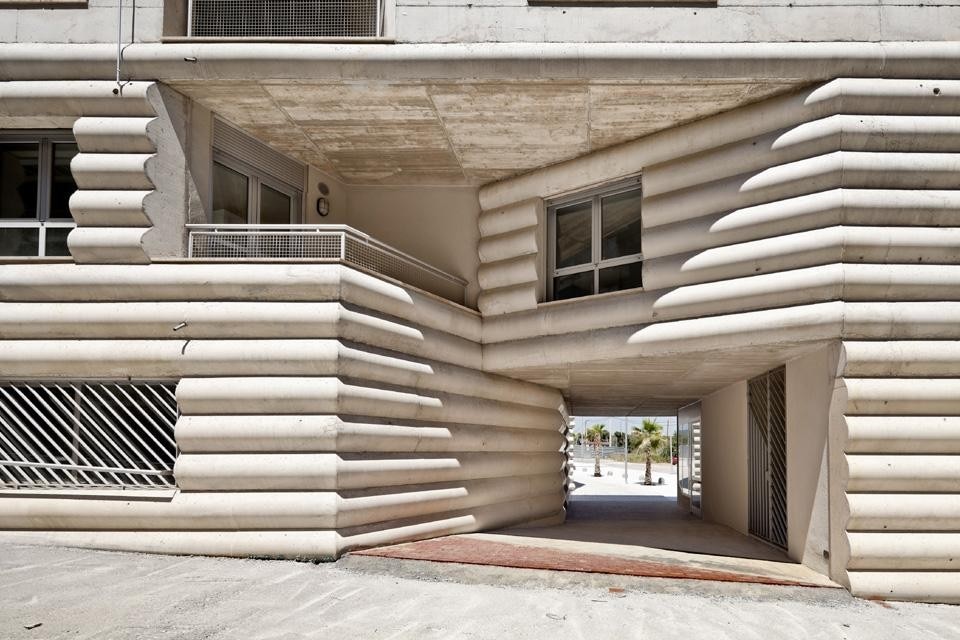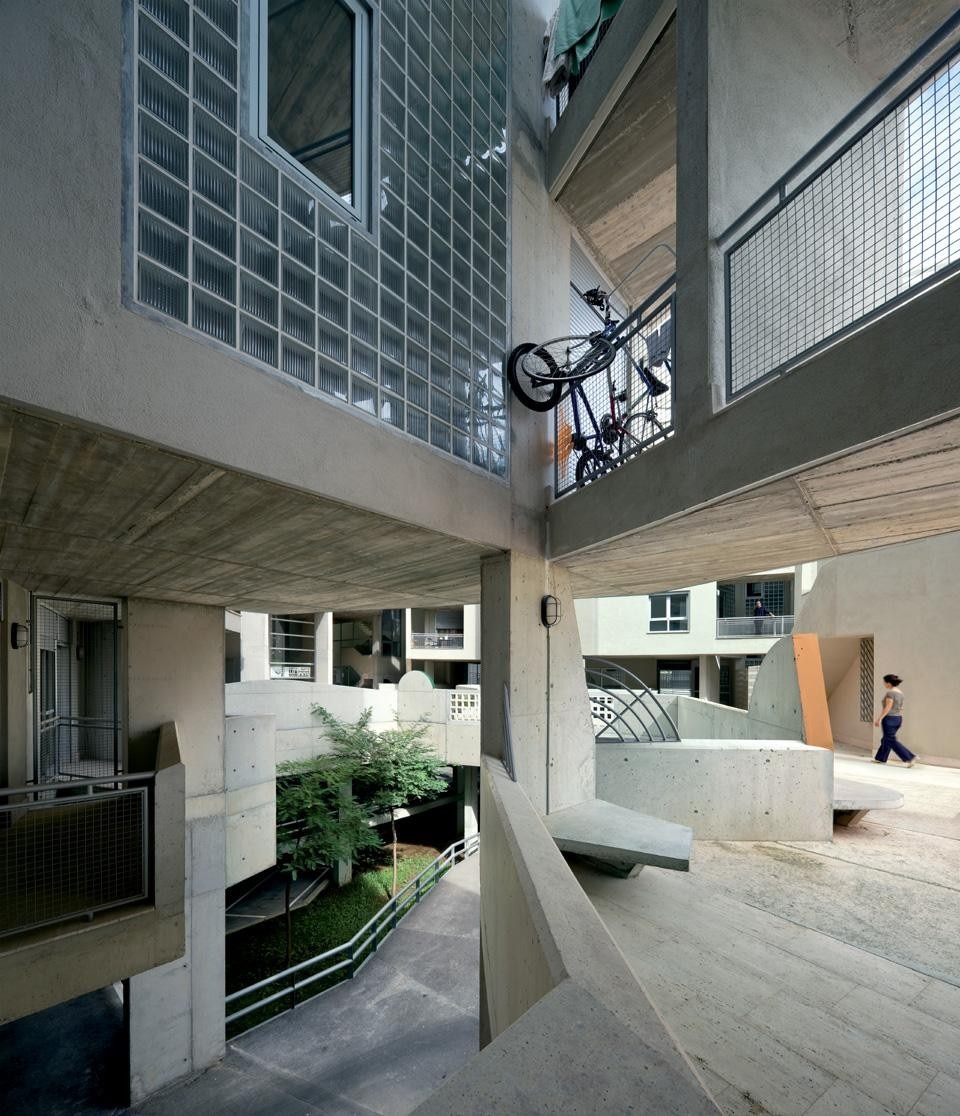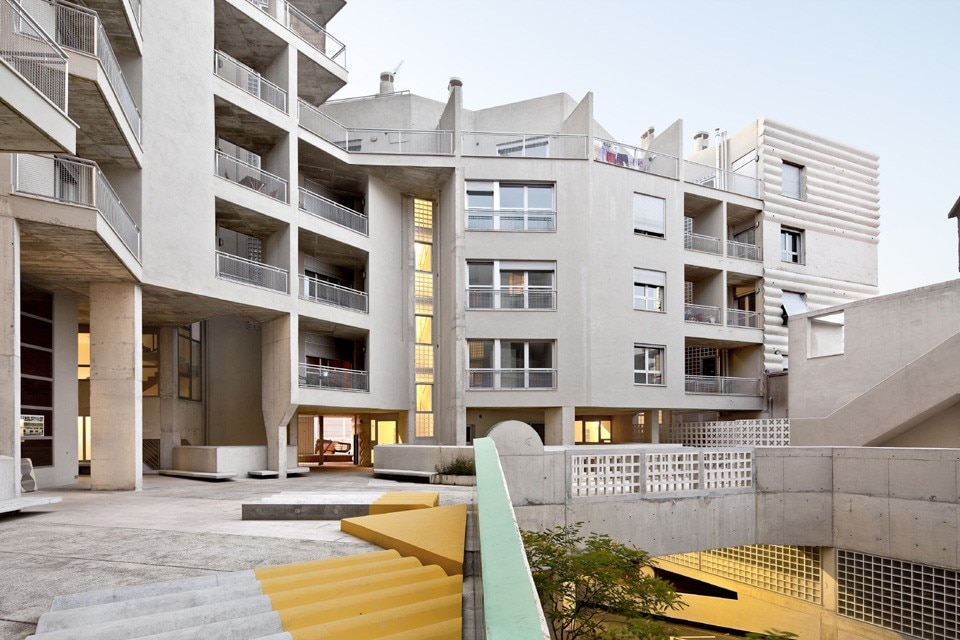The project, which takes its name from the number of families it looks to provide for on a single site, features a large central patio — a social platform — at its core. This open piazza with playgrounds is surrounded by the apartments, with each one's social area (culminating in the balcony) facing the space in a manner Flores & Prats consider similar to "balconies of a theatre".
The interior of each apartment is set around a central area which provides all the necessary functions for all the cyclic domestic activities. The remainder of the space is open, except for one bathroom and one bedroom, allowing "the space to flow from side to side, street to courtyard" in a diagonally configured sequence of domestic situations. The openness of this interior is intended to promote a non hierarchical living space, helping to avoid the difference of genders in the domestic duties.
A concrete façade gives character and scale to the building in relation to the long distance of the landscape in front of it. Providing the building with a good thermal mass, the façades were cast on site with polystyrene formworks, a first for this method. The formworks were fabricated in a factory, in order to reduce the construction time on site and thus allowing for the more careful and slow timing of the in situ concrete construction.
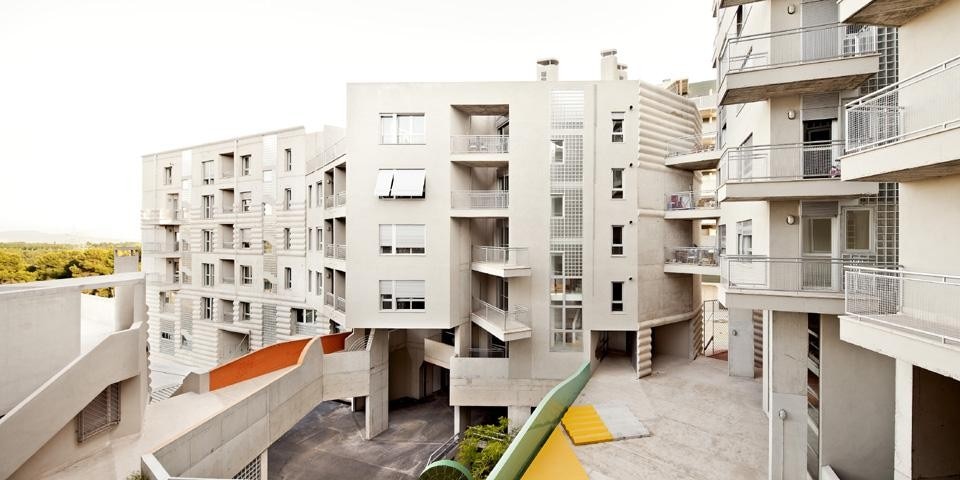
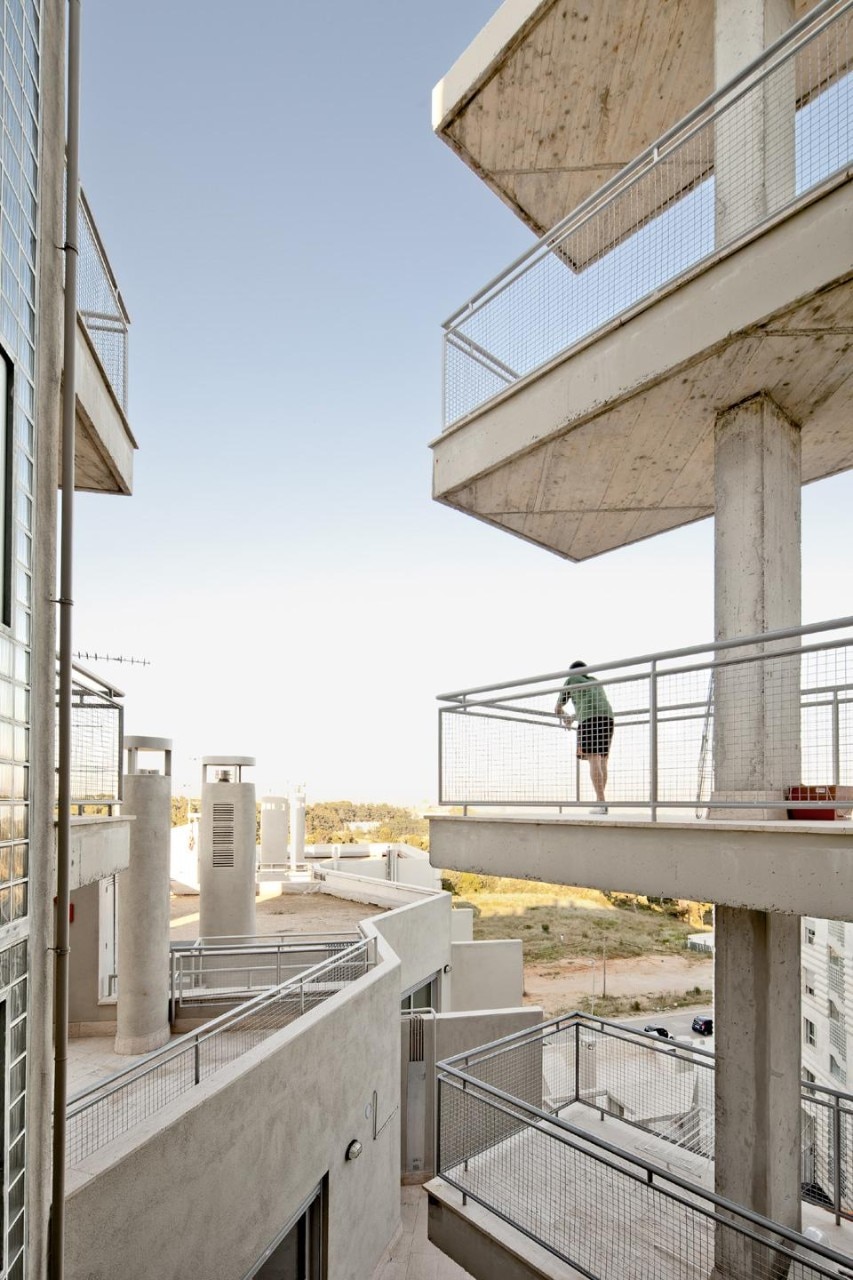
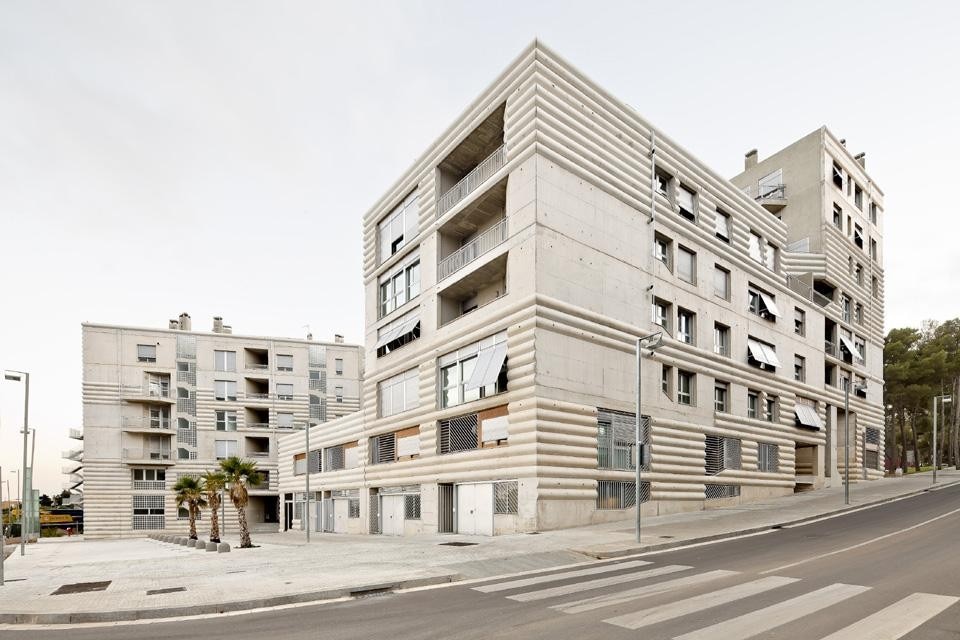
Location: Manzana H del Plan de Mejora del Barrio Torresana
Client: Societat Municipal d'Habitatge de Terrassa
Design and Supervision: Flores & Prats Architects
Construction: Dragados (Víctor Tamborero)
Construction Period: April 2007 - May 2010
Framework: Manuel Arguijo
Installations: Bernat Alonso
Site Area: 14,000 square metres
